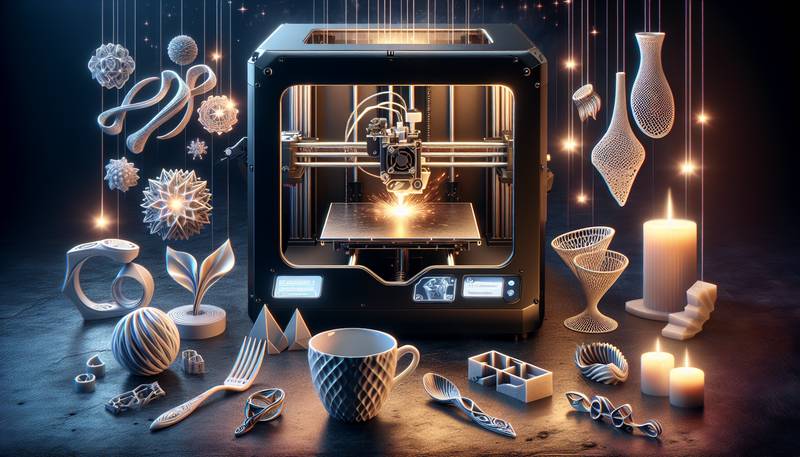3D Printing: Revolutionizing Manufacturing from Prototypes to Everyday Items

Introduction
3D printing has come a long way since its inception in the 1980s. Initially used for creating prototypes in industrial settings, 3D printing technology has evolved to the point where it is now used to create a wide range of everyday products, from shoes to phone cases to even food. In this article, we'll explore the journey of 3D printing from its early days as a prototyping tool to its current status as a game-changer in the world of manufacturing.
The Early Days of 3D Printing
3D printing, also known as additive manufacturing, was first developed in the 1980s as a way to quickly create prototypes for product development. The process involves creating a three-dimensional object by layering material on top of itself, typically using a computer-aided design (CAD) model as a blueprint. The technology was initially expensive and limited in its capabilities, which meant that it was only accessible to large corporations with big budgets.
3D Printing Goes Mainstream
As the technology improved and became more affordable, 3D printing began to make its way into the mainstream. By the early 2000s, 3D printers were no longer limited to industrial settings and were being used by hobbyists, small businesses, and educational institutions. This democratization of the technology opened up new possibilities for what could be created with 3D printing, and as a result, the range of products being produced expanded significantly.
3D Printing in the Consumer Market
Today, 3D printing is used to create a wide range of consumer products, from custom-fit shoes to personalized phone cases to even food. The technology has become more accessible than ever, with 3D printers now available for home use at a relatively low cost. As a result, individuals can now design and create their own unique products from the comfort of their own homes.
The Benefits of 3D Printing for Manufacturing
3D printing offers numerous benefits for manufacturers, including reduced waste, lower costs, and faster production times. The technology allows for the creation of complex designs that would be difficult or impossible to produce using traditional manufacturing methods. Additionally, because 3D printing only uses the material that is needed for the final product, there is less waste produced compared to traditional manufacturing processes.
Cost Savings
One of the biggest benefits of 3D printing for manufacturers is the cost savings it provides. Traditional manufacturing methods often require expensive molds and tooling, which can be cost-prohibitive for small businesses and startups. With 3D printing, there is no need for these upfront costs, as the technology allows for the creation of products without the need for molds or tooling.
Faster Production Times
Another advantage of 3D printing is the faster production times it offers. Traditional manufacturing methods can take weeks or even months to create a product, whereas 3D printing can produce a product in a matter of hours or days. This allows manufacturers to bring products to market more quickly and respond faster to changes in consumer demand.
The Future of 3D Printing
As 3D printing technology continues to evolve, we can expect to see even more innovative uses for the technology. From creating personalized medical implants to constructing buildings, the possibilities for 3D printing are seemingly endless. The technology is also being used to create sustainable products, such as biodegradable materials and products made from recycled materials.
3D Printing in Medicine
One of the most exciting areas of 3D printing is its use in the medical field. 3D printing is being used to create custom-fit prosthetics, implants, and even organs. The technology allows for the creation of products that are tailored to the specific needs of individual patients, improving their quality of life and chances of recovery.
3D Printing in Construction
Another area where 3D printing is making an impact is in the construction industry. 3D printers are being used to construct buildings, bridges, and other structures, offering a faster and more cost-effective alternative to traditional construction methods. The technology is also being used to create sustainable buildings, with some 3D printers using materials like recycled plastic or biodegradable materials.
Conclusion
3D printing has come a long way since its early days as a prototyping tool. The technology is now being used to create a wide range of everyday products, offering numerous benefits for manufacturers and consumers alike. As 3D printing technology continues to evolve, we can expect to see even more innovative uses for the technology, making it a game-changer in the world of manufacturing.


